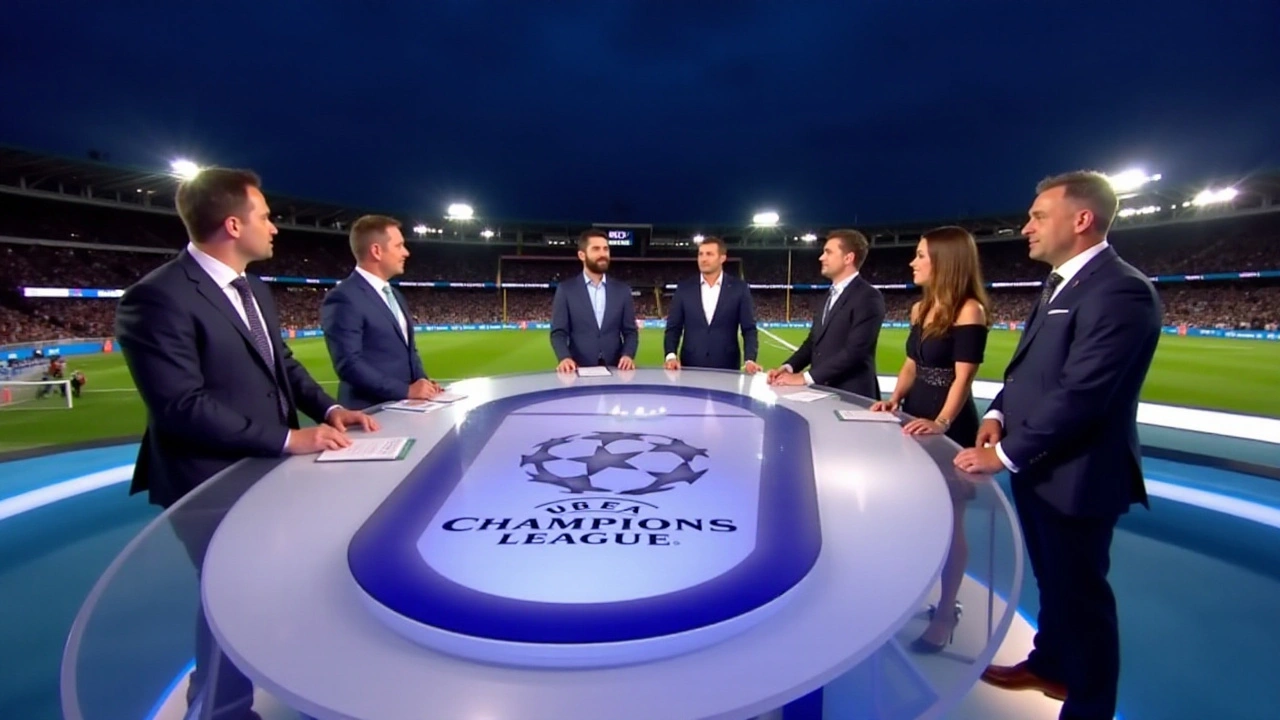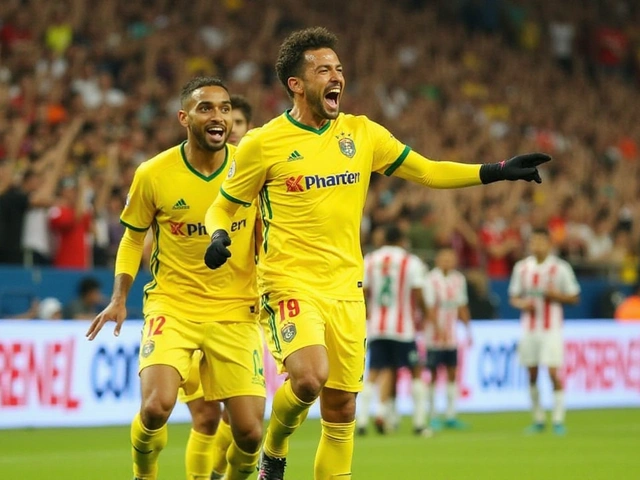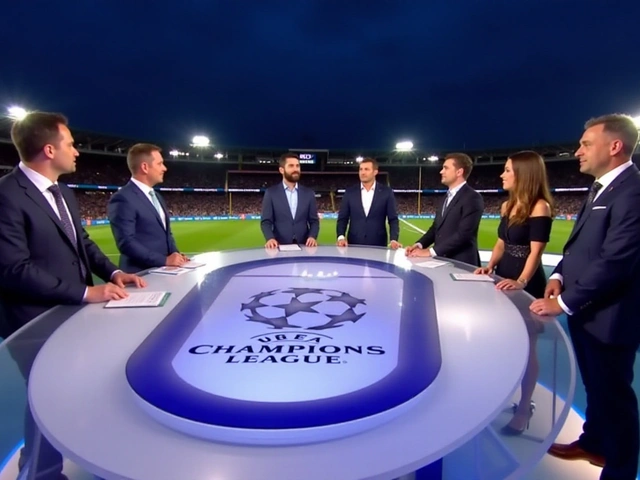UEFA Youth League Makes Bold Changes: More Teams, More Rounds in Domestic Champions Path
The UEFA Youth League, known for its role in spotlighting young football talent across Europe, is set to see significant changes for the 2024/25 season. Central to this transformation is the expansion of the domestic champions path, which will now include 52 teams instead of the previous 32. This ambitious reformatting is designed to increase the inclusiveness and competitiveness of the tournament, allowing more youth teams from various European national associations to participate and vie for glory.
Expansion and New Structure
The decision to expand the number of participating teams stems from a desire to provide a larger platform for emerging talents. Moving from 32 to 52 teams marks a considerable increase, broadening the scope of the competition and ensuring more young players can showcase their skills on an international stage. The revamped domestic champions path will feature three rounds instead of two, adding an additional layer of excitement and challenge. Each of these rounds will be crucial for teams aiming to navigate their way to the knockout stages.
This new structure means that success in the domestic champions path now requires overcoming more hurdles. The stakes are higher, but so are the opportunities. The first two rounds will see teams from different national associations face off, leading up to the pivotal third round. The winners of these rounds will then enter the play-offs, where they will encounter the runners-up from the UEFA Champions League path group stage. This mixing of paths ensures a high caliber of competitive matches, potentially creating new rivalries and memorable moments.
Significant Draw and Key Match-Ups
The draw for the play-offs was conducted on September 3, 2024, at the House of European Football. This highly anticipated event paired the winners of the second round from the domestic champions path with the second-placed teams from the UEFA Champions League path group stage. The results of the draw have already sparked discussions and strategic planning, as teams prepare for their crucial matches scheduled for February 6 and 7, 2025.
One of the standout fixtures sees Swiss side FC Basel 1893 taking on German giants FC Bayern München. Both teams have a rich history in nurturing young talent, making this an exciting and unpredictable encounter. Another intriguing match-up features FK Partizan from Serbia going head-to-head with Portuguese team SC Braga. Both clubs have been successful in their respective youth leagues, promising a fiercely contested showdown.
Greek team Olympiacos FC will face Italy's FC Internazionale Milano, a match that has fans eagerly anticipating a display of technical and tactical football. Furthermore, MŠK Žilina from Slovakia will challenge Germany’s Borussia Dortmund, another fixture loaded with potential. French club FC Nantes meets Spanish side Sevilla FC in a clash that is expected to be both strategic and explosive.
The match between 1. FSV Mainz 05 and FC Barcelona is equally compelling, as both clubs are known for their exceptional youth academies. FC Midtjylland from Denmark will take on RB Leipzig from Germany, rounding out the slate of thrilling matches. Finally, Dutch team AZ Alkmaar will contest with Atlético de Madrid from Spain, a fixture that promises high drama and intensity.
Structured Play and Hosting Rules
These play-off matches are single-leg ties, a format that leaves no room for error and demands peak performance from the young athletes. Importantly, the winners of the second round from the domestic champions path will have the advantage of playing at home, a factor that could influence the outcomes. Adhering to the principle that clubs from the same association cannot be drawn against each other, the draw ensures a diverse and competitive set of fixtures.
This reshaping of the tournament is not just about increasing the number of participants. It is part of a broader strategy to enhance the dynamism and appeal of the UEFA Youth League. By providing more teams the chance to compete at a high level, UEFA hopes to stimulate the development of young players and offer them invaluable international experience.
The Vision Behind the Reform
The expanded domestic champions path illustrates UEFA's commitment to grassroots football and youth development. This initiative aims to bridge gaps between smaller national associations and the traditional powerhouses of European football. It offers a tangible pathway for young talents from all corners of Europe to experience top-tier competition.
Moreover, this broadened exposure is expected to have long-term benefits for the sport. By cultivating footballing talent at a younger age and providing these players with competitive opportunities, UEFA is investing in the future of football. Developing young athletes in such a structured and high-stakes environment can only bode well for the quality of football in years to come.
The adjustments to the domestic champions path are also perceived as a move to keep the tournament dynamic and unpredictable. This element of unpredictability could draw more fans and increase viewership, showcasing the next generation of football stars to a broader audience. Additionally, it opens avenues for talent scouts and clubs to discover and nurture young prospects who might have otherwise remained under the radar.
Anticipations and Future Speculations
With the first play-off matches scheduled for early February 2025, the anticipation is palpable. Teams are gearing up for what promises to be a riveting round of fixtures. Coaches and players alike are fine-tuning their strategies and focusing on peak performance. The added round in the domestic champions path, though demanding, has been welcomed by many in the footballing community who see it as a fair test of skill and resilience.
As these young athletes step onto the pitch, they carry with them the hopes and pride of their respective clubs and national associations. The youth league, though primarily a developmental platform, is increasingly viewed through a competitive lens. Winning matches and progressing in the tournament brings prestige, attention, and validation of the clubs' youth programs.
Looking ahead, this expanded format could become a staple in the UEFA Youth League, provided it meets its goals of enhancing competition and participation. Success could lead to further innovative changes in youth football tournaments across Europe. UEFA’s commitment to investing in youth talent is clear, and the 2024/25 season of the Youth League stands as a testament to this progressive vision.





Comments
Wow, UEFA really thinks adding 20 more clubs will magically solve the talent gap. As if those tiny academies suddenly become powerhouses overnight. The poor kids will just have to fight through extra rounds while the big clubs keep hoarding the spotlight.
Expanding the Domestic Champions Path is a step toward inclusivity. More nations get a chance to showcase their youth development, and that can only enrich the competition. It also spreads the excitement to fans who rarely see their clubs on a European stage.
From a developmental perspective, the additional round introduces a higher volume of high‑pressure matches, which is essential for nurturing tactical awareness and mental resilience among emerging athletes. The exposure to diverse playing styles across Europe will also broaden their technical repertoire.
The cultural exchange inherent in these fixtures cannot be overstated. When a Serbian side meets a Portuguese academy, you get more than just football – you get a dialogue of philosophies, training methods, and even language. That’s the essence of a truly pan‑European youth league.
Exciting times! 😊 Seeing Basel vs Bayern at youth level is a dream. Can't wait to see which future stars emerge. 🙌
The structural redesign of the UEFA Youth League, particularly the augmentation of the Domestic Champions Path from thirty‑two to fifty‑two entities, introduces a multiplicative effect on the developmental pipeline. By integrating an additional knockout round, clubs are compelled to calibrate squad rotation strategies, fostering depth across the roster. Moreover, the increased exposure to cross‑border tactical paradigms accelerates cognitive adaptability among nascent talents. Scouts, leveraging data‑analytics frameworks, will now grapple with a broader dataset, refining talent identification algorithms. From a macro‑economic standpoint, this expansion may stimulate ancillary revenue streams-broadcast rights, merchandising, and localized sponsorships-thereby reinforcing the financial sustainability of youth academies. The logistical considerations, including travel itineraries and player welfare protocols, will necessitate augmented coordination among national associations. Importantly, the home‑advantage clause for second‑round victors could skew competitive equity, prompting debates on fairness versus reward mechanisms. Ultimately, the initiative aligns with UEFA’s strategic vision to democratize elite competition, fostering a more resilient pipeline of home‑grown professionals for senior squads across the continent.
While expanding the tournament seems noble, we must remember that youth football should prioritize education and personal growth over commercial spectacle.
The new format strikes a decent balance-more matches mean more learning, but the single‑leg knockout keeps the stakes high. It'll be interesting to watch how clubs manage player rotation.
Great move, guys! More games = more chances for the kids to shine and for us fans to discover the next Messi or Mbappé.
I'm curious how the draw constraints-no same‑association matchups-will affect the overall competitiveness. Will it lead to more unpredictable pairings?
The extra round adds pressure but also helps players grow.
Finally, UEFA acknowledges that the traditional powerhouses can't hog all the limelight. Let the underdogs have their day!
Dude, this is gonna be lit! More clubs, more hype, more chances for us to see our local heroes on a big stage.
Yo, this expansion is a cool idea. Gives the smaller academies a real shot at proving themselves against the big guns.
Love seeing more nations represented. It makes the tournament feel truly European.
Yo bro, 52 teams? That's insane! Hope the schedule ain't a mess, lol.
More teams, more matches-sounds like a marketing push to me. Not sure it's all that beneficial for actual talent development.
More teams, more chaos.